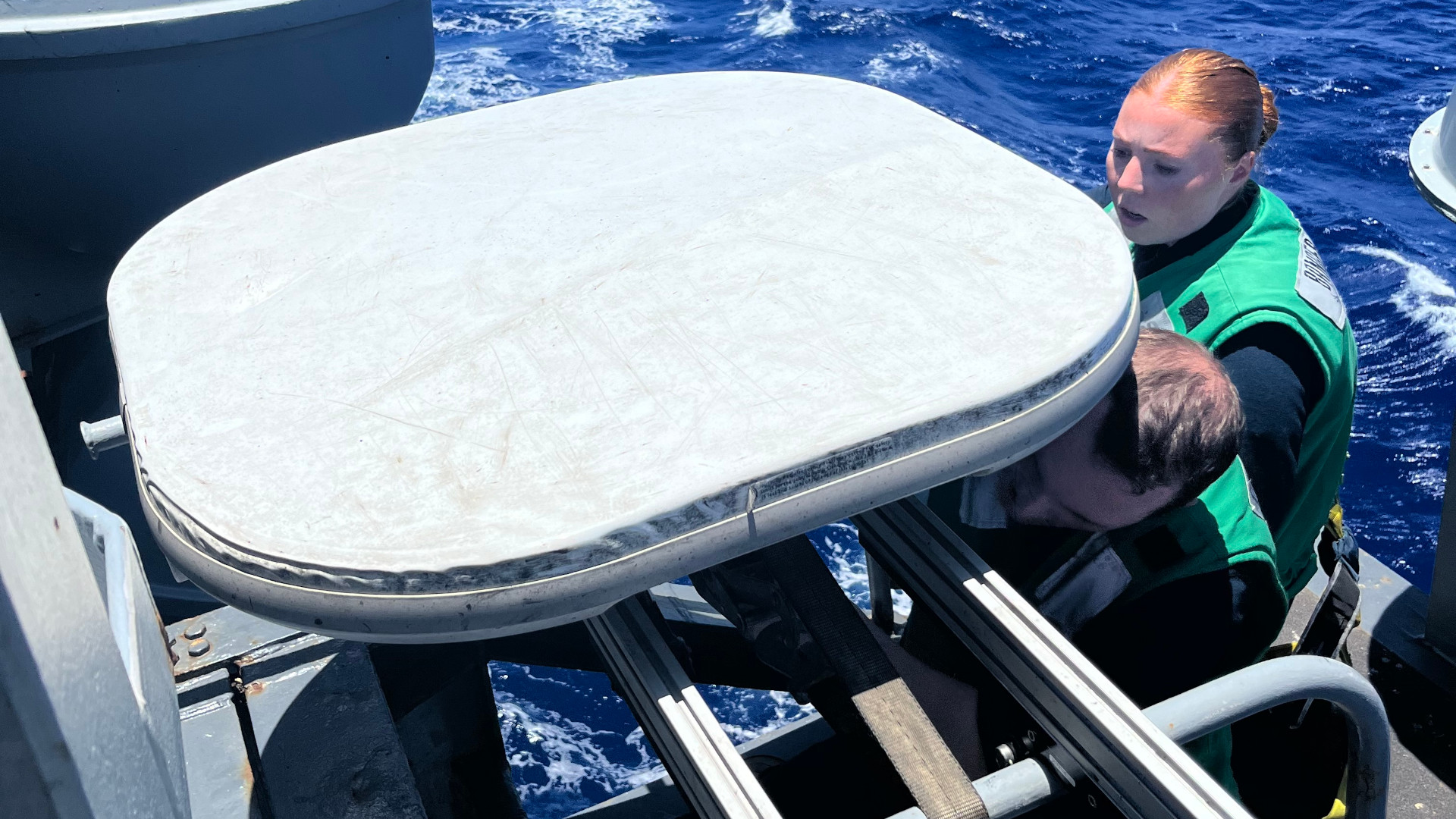The U.S. Navy says it is on the verge of having improved persistent, reliable, and secure high-speed internet connections across its fleets thanks to a project leveraging commercial satellite constellations like SpaceX’s Starlink. This is a sorely needed upgrade in connectivity that offers important operational and morale-boosting benefits for the crews of Navy ships wherever they might be sailing.
What is formally known as Sailor Edge Afloat and Ashore (SEA2) originally began as an ad-hoc effort aboard the Nimitz class aircraft carrier USS Abraham Lincoln. Now it “is on the cusp of being available on every Navy ship and more shore sites,” according to a recent news item from the Naval Information Warfare Systems Command (NAVWAR).
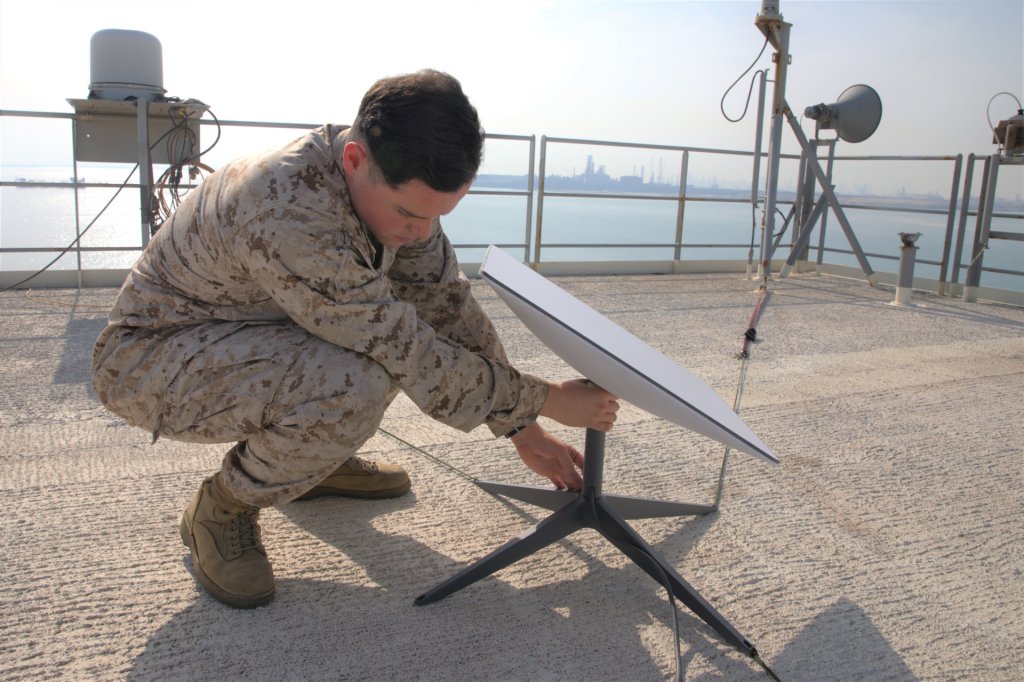
“Before SEA2, ship communications have relied upon Department of Defense (DOD) satellites for the past 30 years,” the NAVWAR piece explains. “These six satellites were roughly 22,300 miles away in geostationary orbit and provided a footprint on Earth the size of a hemisphere, resulting in slow data rates as the signal traveled up to the satellite and back down to its final destination.”
Navy ships have also made use of other largely ad-hoc commercial internet links over the years, including with local networks ashore during port visits, However, the service’s top information warfare command says these “previous internet solutions had no full authority to operate and were only tolerated.”
“The need for increased connectivity was exacerbated by the COVID-19 pandemic shutdown in March 2020 when ships were unable to perform port calls due to country restrictions, thus severing their connection to the rest of the world,” the recent Navy news story notes. “Better and more reliable Internet access would mitigate the issues that arise from less frequent interactions with external sources.”
“Technological developments with low-orbit satellites like Starlink and [Eutelsat] OneWeb have made them a more viable and accessible option” for use with architectures like systems like SEA2, according to NAVWAR. “Sitting between 375 to 750 miles above Earth and numbering around 7,000 currently in orbit, they could provide a much faster and more reliable connection if appropriately utilized.”

Distributed satellite constellations have the added benefit of being more resilient against various kinds of attacks, including electronic warfare jamming and even the physical loss of individual nodes.

Per NAVWAR, “in order to utilize low-orbit satellites for a naval ship’s needs, three key objectives needed to be achieved: laser crosslink capability so satellites could communicate with each other, a downlink for shore sites to connect to the Internet and a mobility code so a ship’s terminal could remain connected to a satellite even as it traverses an ocean.”
As part of SEA2’s development, NAVWAR’s “Program Executive Office Command, Control, Communications, Computers and Intelligence (PEO C4I) … was tasked to develop the capabilities to overcome those three obstacles through its PMW 170 Communications and Global Positioning System Navigation program office. The connection established by PMW 170 is known as STtNG, or Satellite Terminal (transportable) Non-Geostationary, which allows ships’ tactical feeds to gain secure access to low-orbit satellites,” according to the recent news item from the command. “It provides a midline level of throughput, about 30 to 50 megabits per second. From there, the bandwidth was scaled up by connecting multiple Starlink antennas to achieve the objective of one gigabit per second.”
As already noted, SEA2 also leverages OneWeb, and commercial antennas from Kymeta have been used to link to that network. The architecture is designed to be network agnostic and can also make use of military satellite communications constellations.
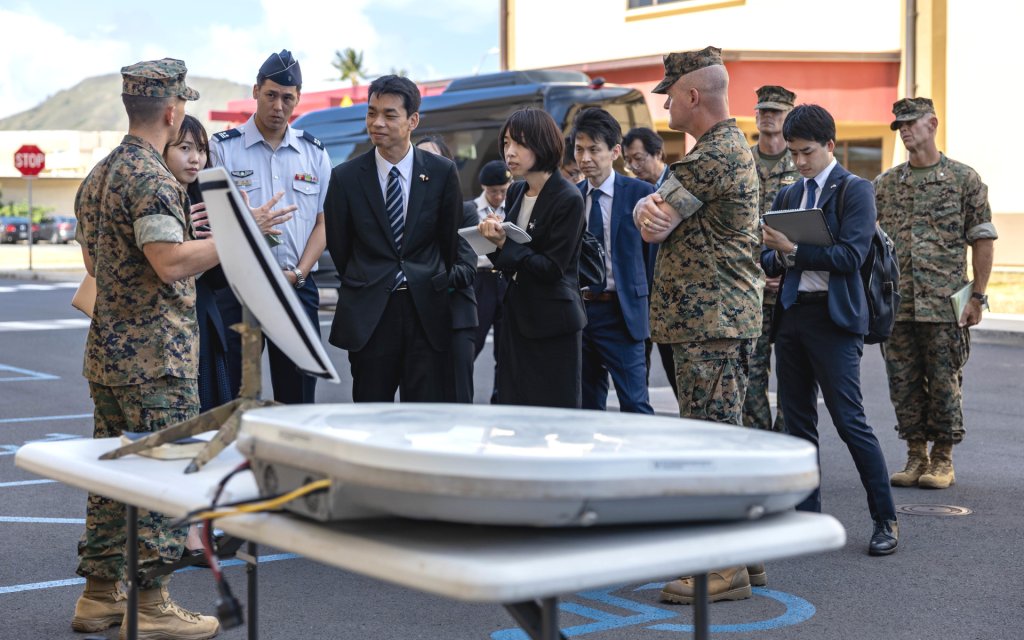
From an operational perspective, there are clear benefits to having constant high-bandwidth internet access available across all Navy ships, as well as sites ashore. This includes just being able to communicate more reliably using the internet, including via video call, helping to streamline day-to-day operations. SEA2 presents a clear avenue to a broader resilient beyond-line-of-sight communications capability, as well.
In addition, many “tactical” computer applications, even certain ones designed to handle encrypted classified data, “are already designed to work with commercial internet,” according to another Navy news story on SEA2 published earlier this year. That piece centered on an interview with Cmdr. Kevin White, a Combat Systems Officer aboard Abraham Lincoln, who is credited as being the driving force behind SEA2’s development.

“The fact that we’re not making use of that opportunity with modern technology to allow classified tactical applications to ride the commercial internet is where we are missing out, so we built Sailor Edge Afloat and Ashore to be able to do that in the future,” White, a Combat Systems Officer aboard Abraham Lincoln, said. “We’re close to demonstrating a couple of those applications, and I am fully confident it will be game changing.”
Other applications have already been demonstrated together with SEA2, including one called Flank Speed Edge, which the Navy describes as “a cloud system capable of transferring terabytes of data from the cloud to users aboard a ship.” The Navy has also previously said that the new internet connectively has made it easier for the crew of Abraham Lincoln, specifically, to put in orders for things like spare parts and fuel, as well as manage maintenance data.
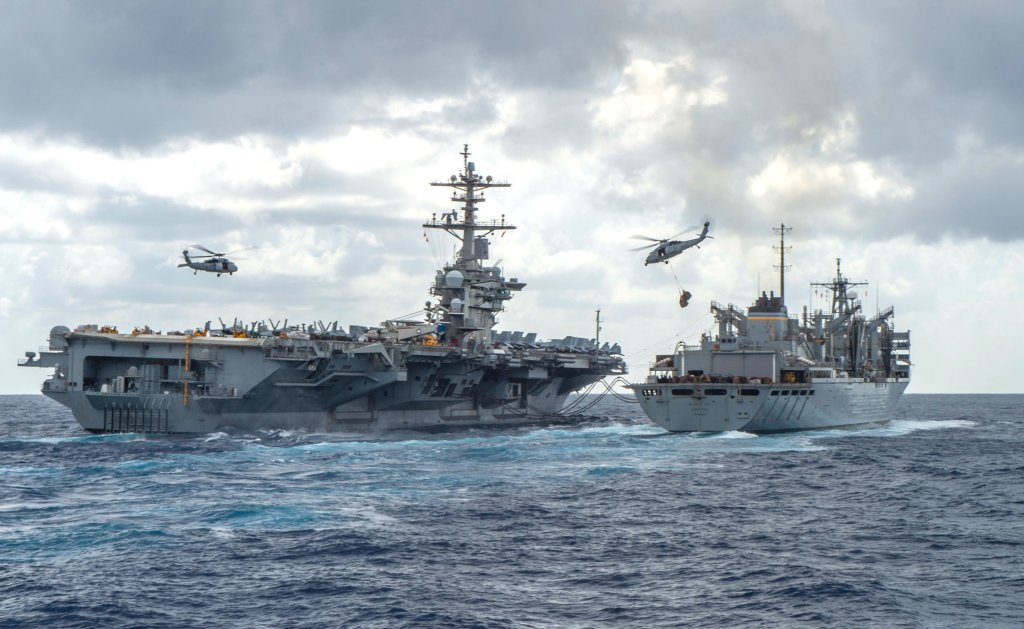
“Right now our logs are showing that we’re able to pass between 3 and 5 terabytes of data per day, which is absolutely massive. And what we’re able to do with software defined networks is scale exactly how that data is used,” Cmdr. White told Federal News Network earlier this year. “Right now we’re demonstrating pushing applications like air wing maintenance apps that live in the cloud, and all of our pay and personnel apps. And that’s just scratching the surface.”
White also told that outlet that SEA2 coupled with Flank Speed Edge had provided more general computing benefits for his ship by allowing them to keep their systems more up to date on a regular basis.
“While we’re out at sea right now, with this P-LEO [proliferated low Earth orbit; also abbreviated pLEO] capability, a cloud connected node and all the right elements in place, we’re able to scale new capabilities as they become available and rapidly deploy them while they’re monitored from the shore side,” White explained. “One of the big challenges we have is the cycle of Windows updates and the cycle of patches, and with that high-speed capability, we can have those update services enabled.”
All this being said, SEA2 still looks to be in a fledging state and has had limitations, at least in the past. As of June, the Navy had not authorized it for use with classified data, according to the Federal News Network. The service has since said that SEA2 has received a first-of-its-kind cybersecurity certification, but it is unclear if this means it can now be used to send and receive classified information. Commercial links also wouldn’t be used in certain operational circumstances, such as when “emissions control” tactics or heightened cyber-hardening is required.

Even if SEA2 remains limited to handling transfers of unclassified information, that is a still major boon for ships like the Abraham Lincoln. Many routine, but still critical day-to-day military logistics and other activities happen in the unclassified realm.
Constant high-bandwidth internet offers important morale-boosting benefits, too, especially for personnel on ships far out to sea for months at a time. SEA2 is in use now to provide improved connectivity for personal voice-over-IP and video calls between sailors and their families back home and recreational television and internet use. Sailors on Abraham Lincoln watched this year’s Super Bowl back in February via a livestream thanks to the new network architecture. Satellite television has been available on Navy warships since the late 1990s, but it is still relatively limited in its offerings with just four channels today.
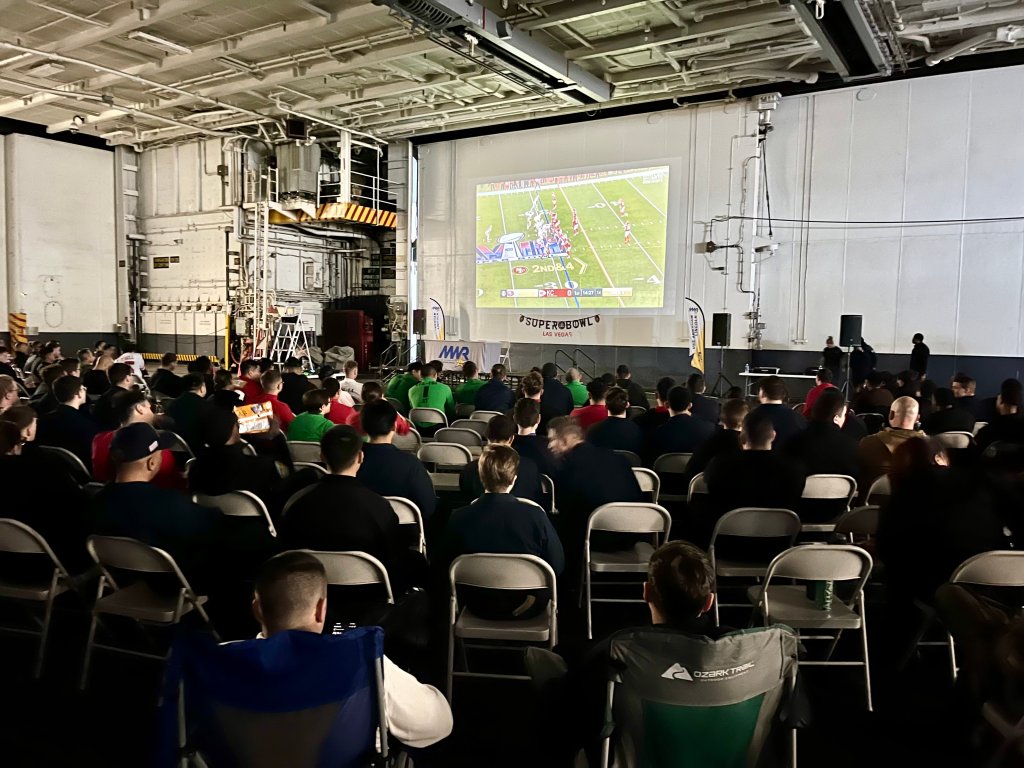
This all has the knock-on effect of reducing the burden on the ship’s other networks, something the Navy has highlighted in its use of other ad-hoc commercial internet links on other ships in the past.
There is a broader trend toward ever-greater internet access for personnel on ships at sea, especially for morale-boosting reasons, among navies the world over. In June, the Japan Maritime Self-Defense Forces began trialing Starlink on two ships to improve internet access for personal use. SpaceX’s satellite internet service has very rapidly become a dominant force in the maritime realm more generally, as well.

As already noted, distributed constellations like Starlink offer extremely valuable resiliency against attacks and, by extension, architecture like SEA2 that can tap into them could offer an important alternative option, at least for certain purposes, if other networks are rendered unusable. Growing concerns about the vulnerability of U.S. government space-based assets to a host of different threats in recent years has already prompted increased interest within America’s armed forces in the use of commercial satellite constellations for communications and other functions.
Use of Starlink, specifically, by the U.S. military has already been growing steadily for years and is not limited to the maritime domain. This has included tests utilizing the space-based internet network for tactical applications. SpaceX now has an entire government-focused business unit called Starshield, which, among other things, supplied more military-tailored versions of Starlink to America’s armed forces.
“I don’t think you could take 10 steps without tripping over a Starshield terminal,” Mark Kitz, head of the Army’s Program Executive Office Command Control Communications-Tactical (PEO C3T), said at the TechNet Augusta 2024 conference just this week, according to Defense News. “I would say the Army is very committed to pLEO and Starshield.”
Similar to what the Navy has been doing with SEA2, “we want to get out of bringing a new antenna every time we want to change providers,” Kitz added. “If a unit deploys and they want to leverage a Ka-band Kuiper [antenna for the satellite network from Amazon], they have that RF front end. If they want to be leveraging Starshield, we swap modems and we go.”
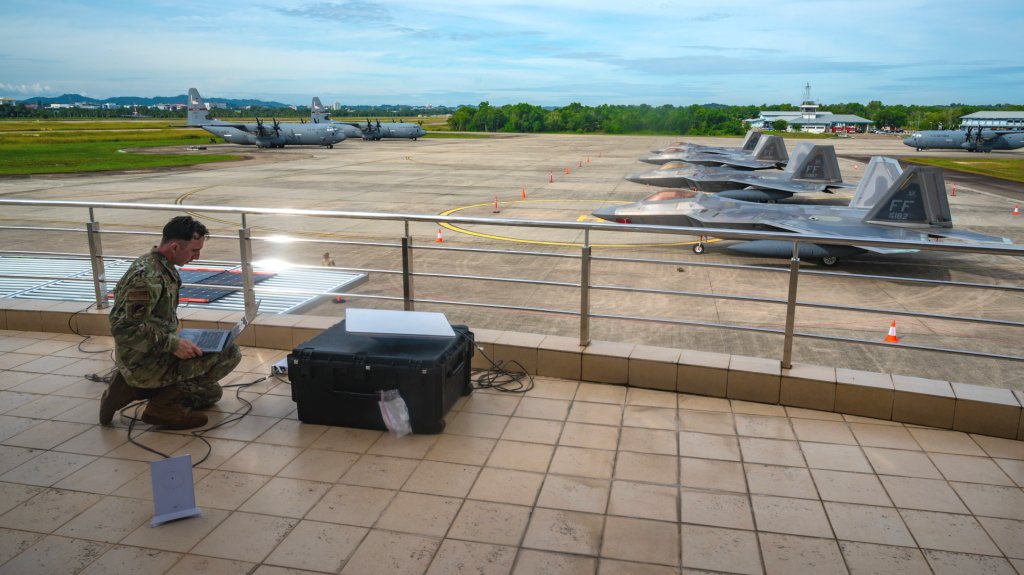
There are clear signs that interest in expanding use of commercial satellite internet services, and Starlink specifically, is only set to grow among other armed forces globally, and with an eye toward potential tactical applications.
There are potential operational security and other concerns that come from increased usage of commercial networks. For instance, in June, the U.S. Army began blocking the use of commercial internet services to access certain Email accounts and other online applications for cybersecurity reasons.
SpaceX, and more specifically its CEO Elon Musk, has also notably faced criticism over how Starlink has and hasn’t been allowed to be used in the course of the conflict in Ukraine.
The U.S. military has been working with SpaceX and others to develop and field new distributed communications and intelligence-gathering satellite constellations that will be fully under its control, as you can read more about here.
Regardless, the new SEA2 architecture pioneered aboard the USS Abraham Lincoln presents an important step forward for Navy internet access at sea that opens a new door to other important future networking developments for the service warships.
Contact the author: joe@twz.com
